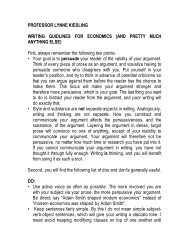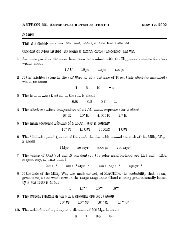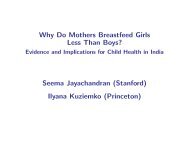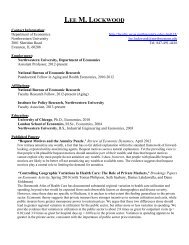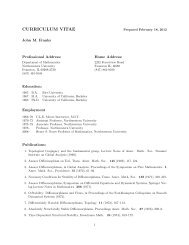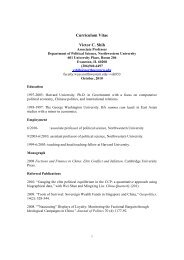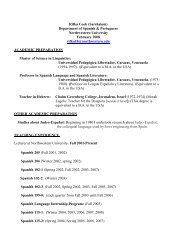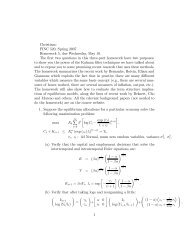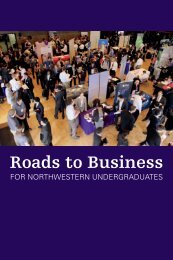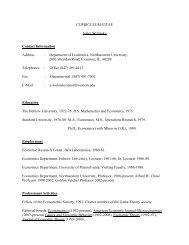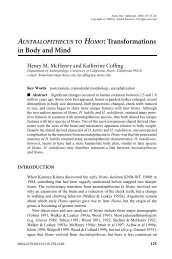DO PATENT POOLS ENCOURAGE INNOVATION? EVIDENCE ...
DO PATENT POOLS ENCOURAGE INNOVATION? EVIDENCE ...
DO PATENT POOLS ENCOURAGE INNOVATION? EVIDENCE ...
Create successful ePaper yourself
Turn your PDF publications into a flip-book with our unique Google optimized e-Paper software.
a mean of 1.93 cited patents per subclass with pool patents this implies a decline<br />
in patenting of 9 percent.<br />
An additional robustness check repeats our main specifications as Poisson<br />
regressions to control for the count data characteristics of patent data. Fixedeffects<br />
Poisson estimates imply that subclasses with one additional pool patent<br />
produced 10 percent fewer patents after the pool formed (exp(-0.098)-1=-0.10,<br />
significant at 1 percent, Table 8, column 2). 16<br />
A final robustness check drops individual industries from the sample.<br />
Specifically, we estimate equation (1) 20 times, each time excluding one pool<br />
from the sample. Dropping aircraft instruments and variable condensers yields to<br />
the largest declines in estimated effects, but estimates remain large and<br />
statistically significant. Without aircraft instruments the estimated decline is -<br />
0.38 (instead of -0.45) patents per subclass and year; without variable condensers<br />
the estimated decline is -0.42 patents per subclass and year (significant at 1<br />
percent, Table 9). In regressions that drop any other industry from the sample, the<br />
estimated decline in patenting remains larger than -0.38.<br />
IV. CORRELATION WITH POOL CHARACTERISTICS<br />
Was the decline in patenting stronger for larger pools or for pools that<br />
were less likely to license their technologies to outside firms This section<br />
presents descriptive evidence on the correlation between the decline in patenting<br />
and the characteristics of individual pools<br />
16 To calculate robust standard errors for Poisson regressions with subclass and year fixed effects<br />
we use STATA’s “xtpqml” coded by Tim Simcoe, based on Wooldridge (1999).<br />
20



